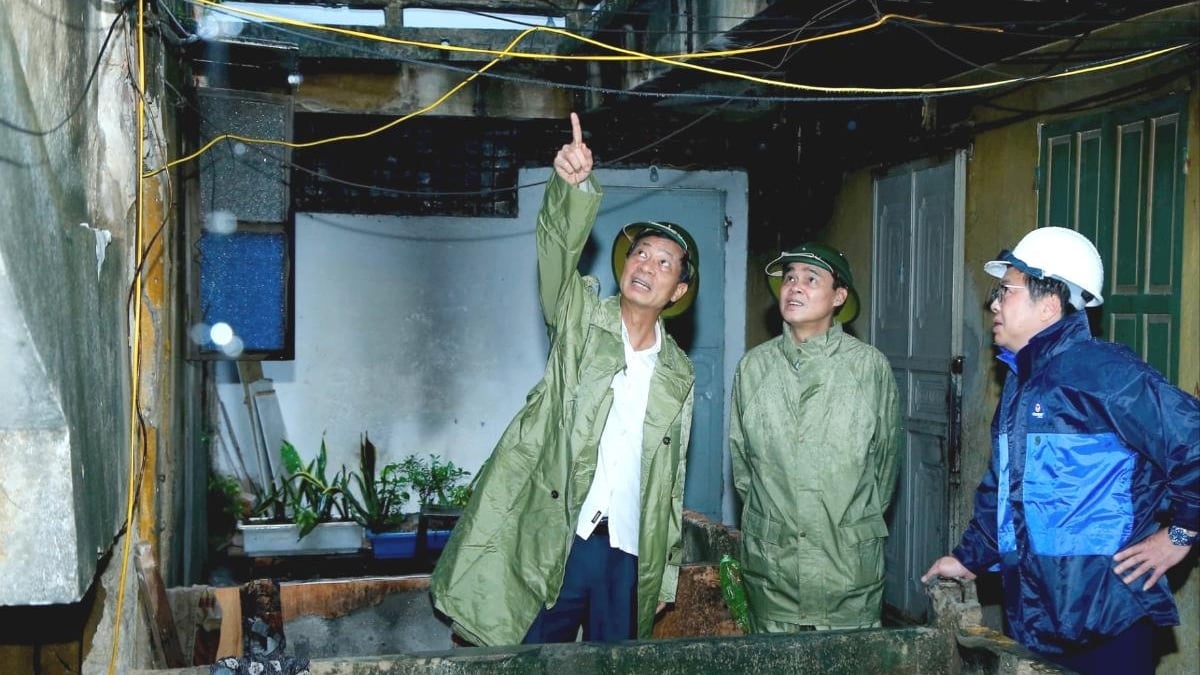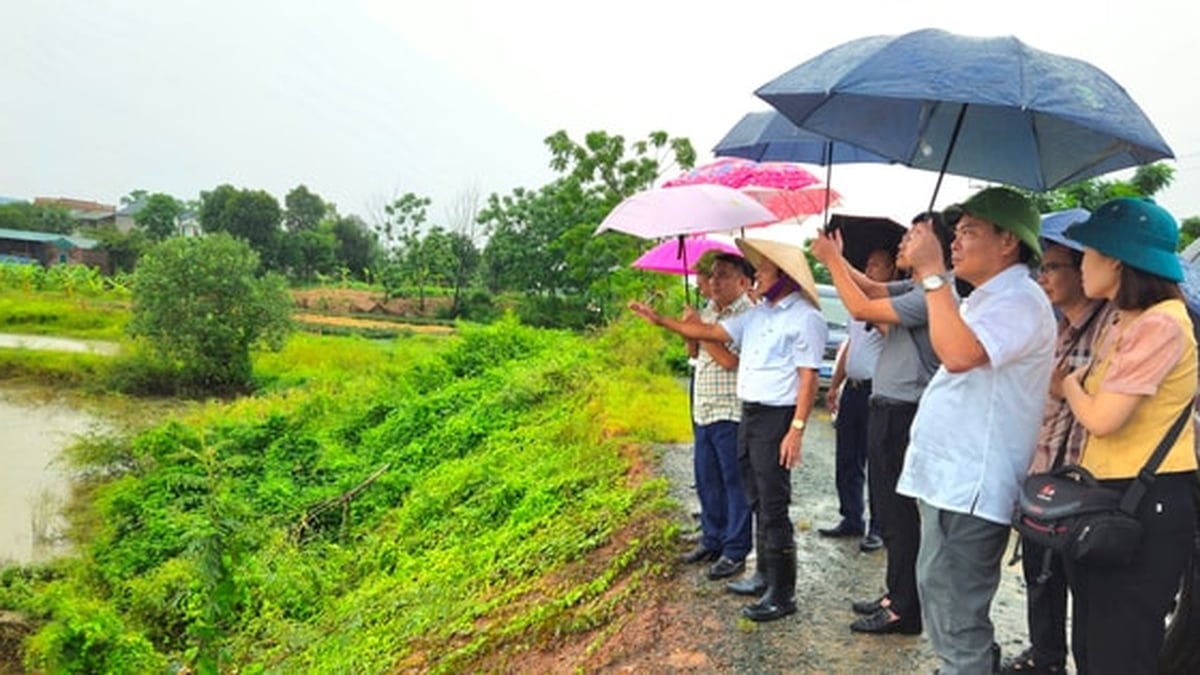The story of the last thatched hut destroyed on Paul Bert Street (now Trang Tien) in January 1888 was recorded in " Hanoi in modern times".
The 524-page publication, a collection of author Dao Thi Dien's research on the process of Hanoi's transformation into a modern Western-style city, the capital of the French Indochina Federation in the late 19th and early 20th centuries. The content is selected from scientific reports and a series of articles the author wrote about Hanoi published in many newspapers, magazines and the website of the National Archives Center I, based on the French colonial documents of the unit.

The work is divided into two parts, opening with the events of two attacks on Hanoi citadel by the French expeditionary army in 1873 and 1882. This is considered a pivotal period in shaping the city's appearance.
According to André Masson's document in the book Hanoï pendant is a life story (1873-1888), immediately after capturing this place in 1883, an infantry company commanded by Captain Retrouvey was stationed at Kinh Thien Palace. Retrouvey had the beautifully carved columns covered with "terrible walls with loopholes".
The author mentions the expansion and planning of the French Quarter in the West of Hanoi from the old citadel in the late 19th century. In addition, she mentions the presence of Paul Doumer in 1897, when he came to Hanoi to take office as Governor General. On January 20, 1900, the French School of the Far East was established, aiming to protect historical relics throughout the Indochina peninsula, including Hanoi.

The process of Hanoi's transformation from a concession to a "French city" is shown in part two. The author organizes 35 articles into eight sub-sections, including: Concession area, Boundaries and administrative organization of the city, Traffic, Streets and street naming, Culture - Society , Education, Protection of landscapes and historical relics, Construction and expansion of the city.
Ms. Dao Thi Dien pointed out that the urban development process was carried out by the colonial government in parallel in two areas, including shaping the administrative boundaries by defining and expanding the city's boundaries, and building a government system consisting of two organizations: the City Council and the City Governor's Court.
Hanoi's transportation during the French colonial period is recreated in a series of articles about the origin of trams and rickshaws and how they were exploited. Through some Western documents, the city's appearance gradually became Europeanized in the 19th century. The urbanization process is reflected in major milestones, such as January 1888, when the last thatched huts were demolished on Paul Bert Street. In 1891, Hanoi had an ice factory. From 1897, the city's roads were paved with gravel, sidewalks were made, sewers were built, and the electricity and water supply systems were completed.
During the period 1920-1945, Hanoi expanded to the South (Bay Mau Lake area), many constructions appeared such as Louis Finot Museum (now the National History Museum), Indochina Finance Department (current Ministry of Foreign Affairs), René Robin Hospital (now Bach Mai Hospital).

At the end of the book, the author devotes an appendix including: Lookup table of street names, squares, and flower gardens in Hanoi before and after 1954, List of French names used to name streets, squares, flower gardens and some buildings in Hanoi before 1954. For example, Abattoire Street existed before 1895, before 1930 it was called Street 159, changed to Duong Thi Ai City (1945), Luong Yen Street (1951), after 1954 until now it is the street of the same name.
In addition, the author provides some new information such as the Long Bien Bridge was designed and built by Daydé and Pillé, not Gustave Eiffel as many people mistakenly believe. She concludes through documents of the National Archives Center I, including bidding documents and the decree of the Governor General of Indochina choosing the Daydé and Pillé company as the official contractor.
Ms. Dao Thi Dien was born and raised in Hanoi, and has many memories of Hang Dau flower garden and the sound of trams along Quan Thanh street. For her, the streets throughout the capital became an indispensable part of her childhood. "I would like to express my deep love for Hanoi in this book," the author said.
Attending the book launch on the morning of September 29, Professor and People's Teacher Vu Duong Ninh commented that in addition to providing information, the author combined analysis and evaluation of the role of the colonial government and their administrative management methods, expressed through documents and official dispatches. The professor was also impressed with the appendix listing street names before and after 1954. "Dr. Dao Thi Dien has found her own way by delving into many historical events of Hanoi through her book," he commented.

Author Dao Thi Dien, 71 years old, graduated with a major in World History from Hanoi University (1970-1975), and worked at National Archives Center I (1975-2008).
She is the author of many monographs. Hanoi through documents and archives (1873-1954) (editor), System of legal documents on construction and management of Hanoi City from 1885 to 1954. The author also participated in compiling books. Historical chronicle of Thang Long - Hanoi, Western Quarter in Hanoi in the first half of the 20th century through cadastral documents, Administrative place names of Thang Long - Hanoi (from the beginning of the 19th century to present) .
Source
























![[Photo] National Assembly Chairman Tran Thanh Man visits Vietnamese Heroic Mother Ta Thi Tran](https://vphoto.vietnam.vn/thumb/1200x675/vietnam/resource/IMAGE/2025/7/20/765c0bd057dd44ad83ab89fe0255b783)












































































Comment (0)